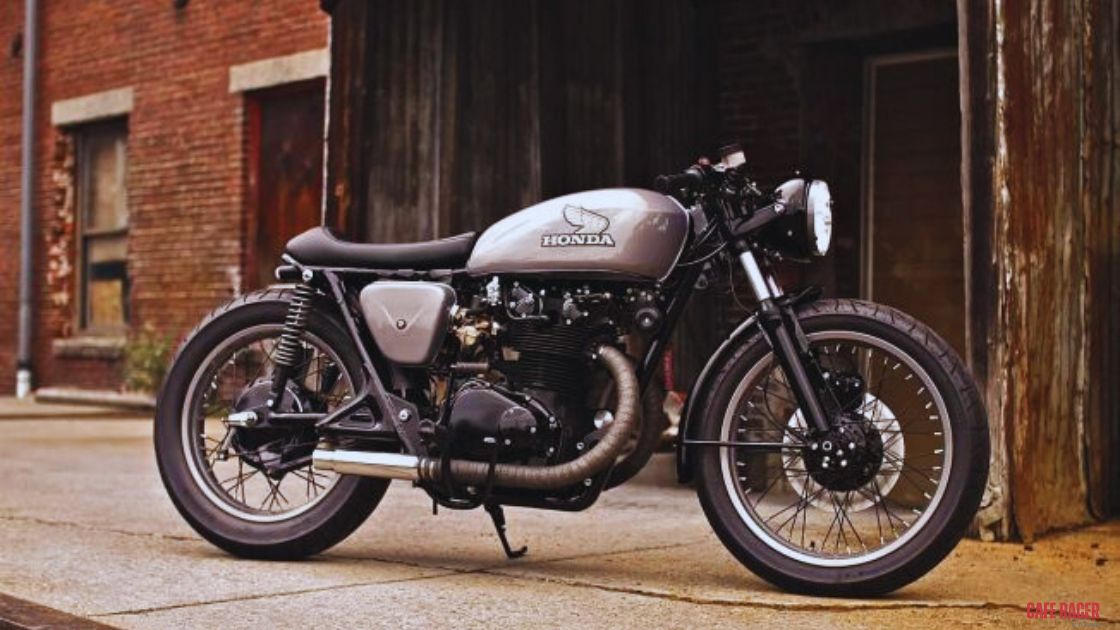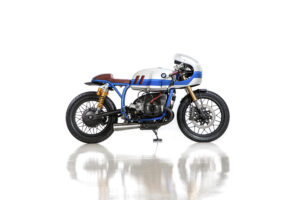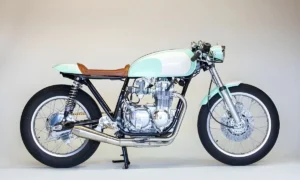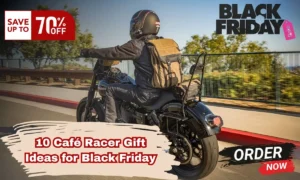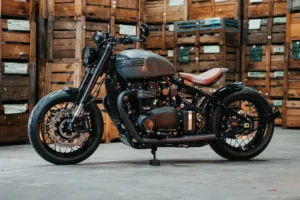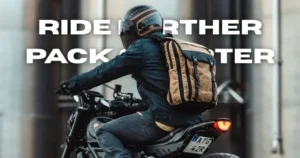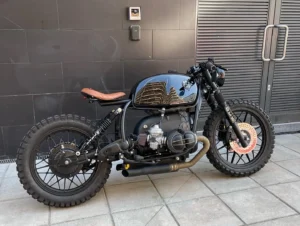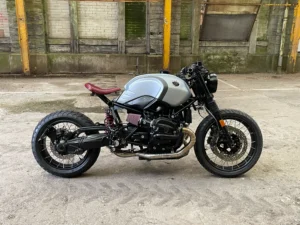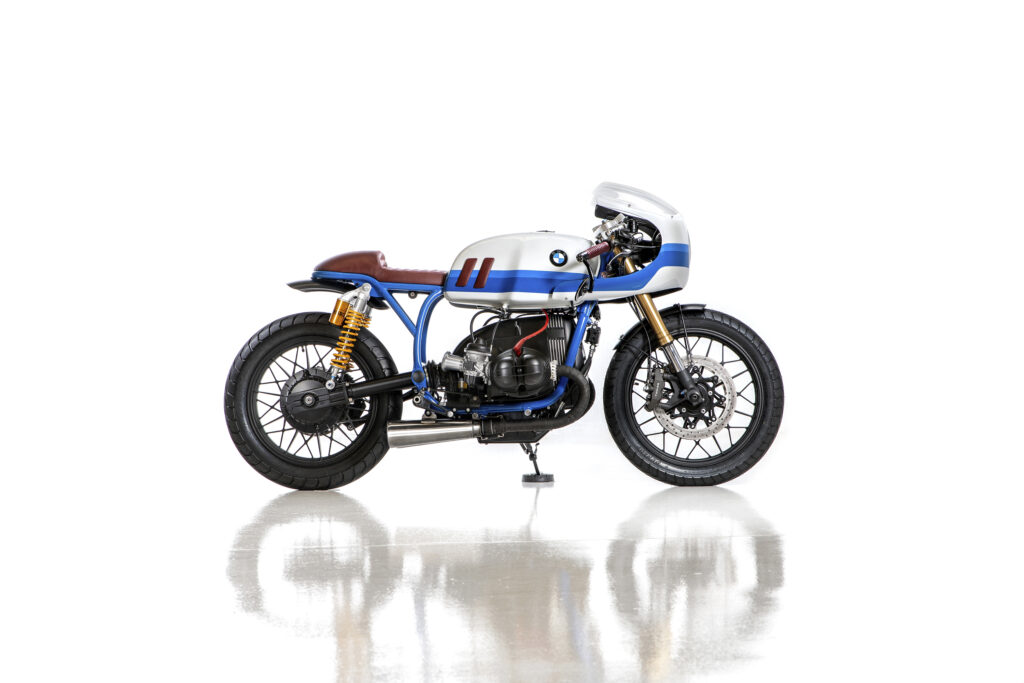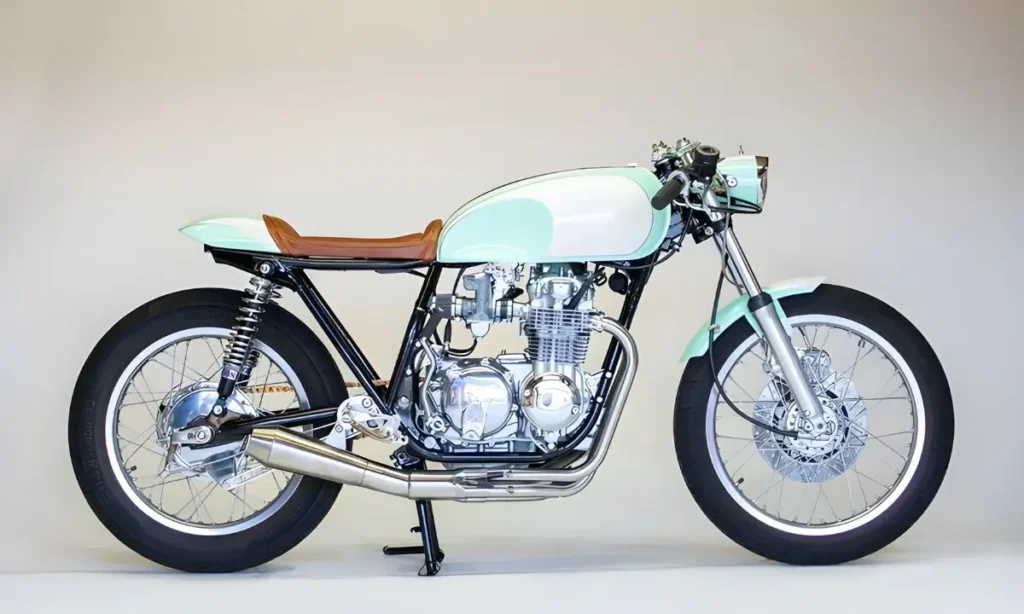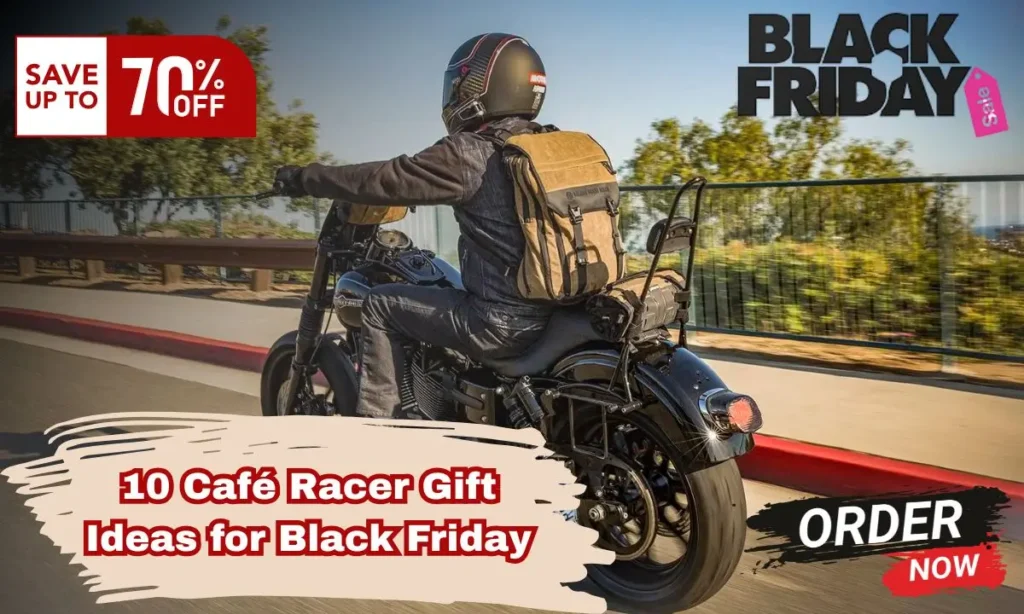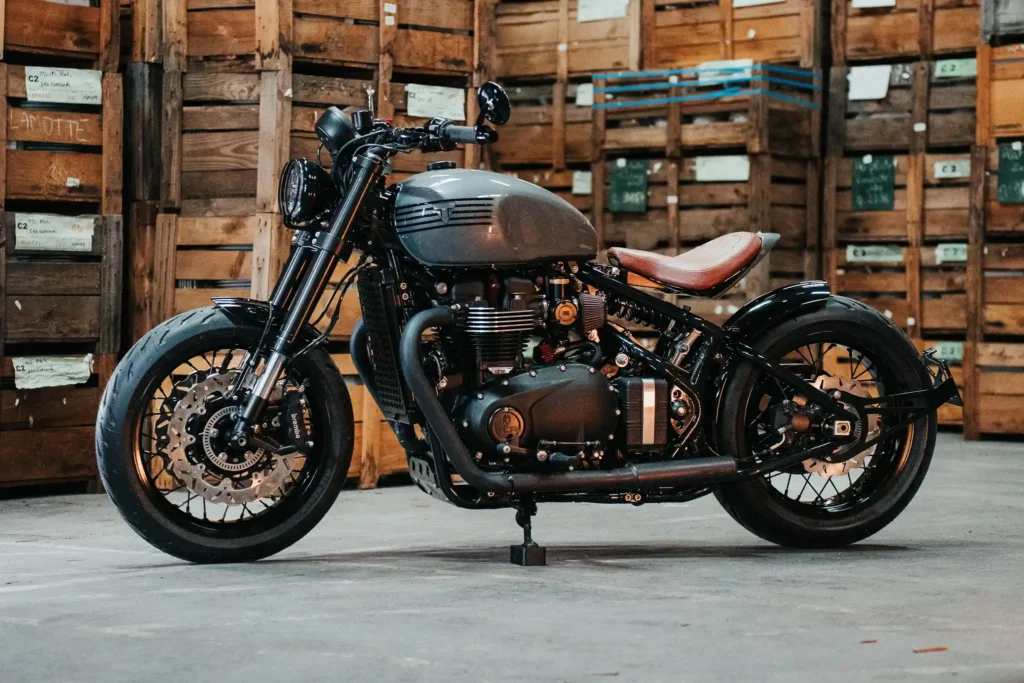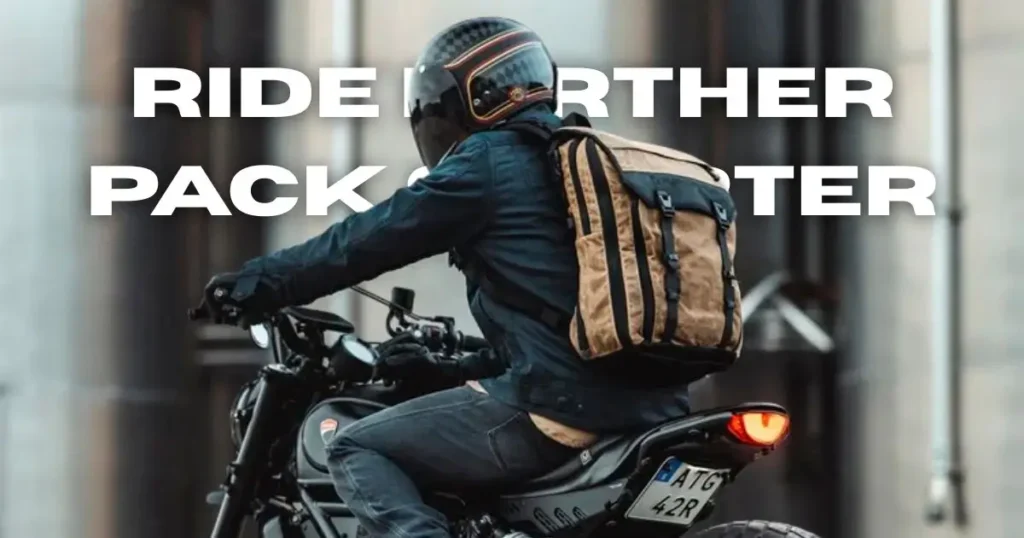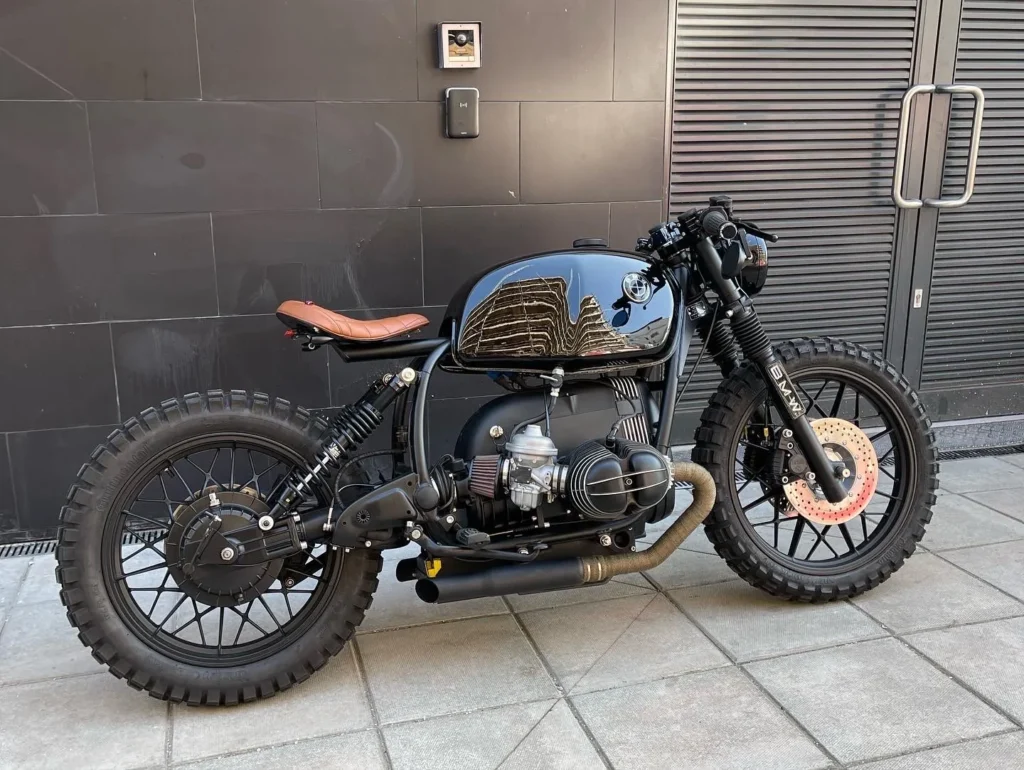Table of Contents
ToggleThe Honda CB450 is a classic motorcycle loved by many. It was first made in the 1960s and quickly became popular. Riders liked it for its strong engine and sleek design. Even today, the Honda CB450 is a favorite choice for building café racers.
Café racers are custom motorcycles known for their lightweight, fast, and stylish look. Riders in the 1960s built these bikes for speed and fun. They wanted a bike that could go fast from one café to another, which is how they got their name.
The Honda CB450 is a great bike to use for a café racer project. It has a solid frame, reliable engine, and lots of options for customization. Many motorcycle builders choose the CB450 because it offers a perfect balance of vintage style and modern performance.
In this guide, I will show you why the CB450 is a top pick for café racer builds. I will also give tips and steps for turning a Honda CB450 into a unique and stylish café racer. Whether you are a beginner or an experienced builder, this guide will help you create a bike that stands out on the road.
History and Evolution of the Honda CB450
Honda launched the CB450 in 1965. It was the first big motorcycle made by Honda. This bike was a big deal because it had a powerful 444cc engine, which was rare at the time. People called it the “Black Bomber” because of its dark paint and aggressive look. The CB450 was Honda’s answer to the British motorcycles that ruled the market back then, like Triumph and Norton.
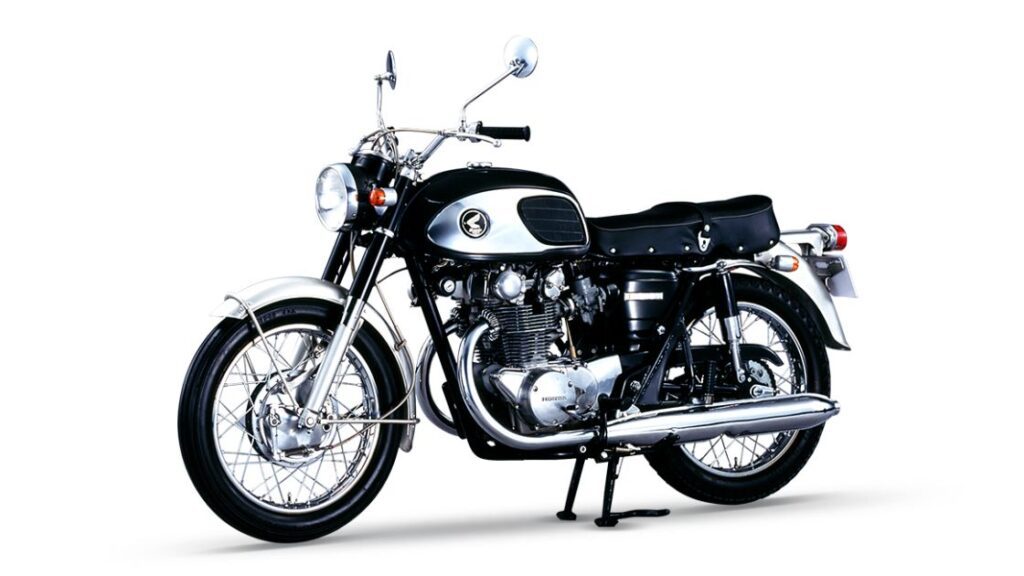
The CB450 had many new features for its time. It used a double overhead cam (DOHC) engine. This gave the bike more power and made it run smoother at high speeds. The CB450 could reach up to 110 miles per hour (about 177 km/h). It was fast for a bike from the 1960s. The strong performance made the CB450 a favorite among racers and speed lovers.
Over the years, Honda made some changes to the CB450. In the 1970s, they updated the bike with new colors and some design tweaks. The engine stayed strong and reliable, which helped it become a classic model. Today, many riders still look for this bike to build their own custom café racer. It offers a mix of vintage style and solid mechanics.
The CB450’s legacy is strong. It was one of the first motorcycles to show that Japanese bikes could be as good as, or better than, European models. Its strong frame, reliable engine, and timeless design make it a popular choice for café racer builds even today.
Honda CB450 Specifications
Here are the key specifications of the original Honda CB450:
- Engine: 444cc, twin-cylinder, DOHC (Double Overhead Cam)
- Horsepower: Around 43 hp at 8,500 RPM
- Top Speed: Up to 110 mph (177 km/h)
- Transmission: 5-speed manual gearbox
- Weight: Approximately 415 lbs (188 kg)
- Frame: Steel double-cradle frame
- Brakes: Front drum brake, rear drum brake
- Suspension: Telescopic front forks, dual rear shocks
- Fuel Capacity: About 3.5 gallons (13 liters)
- Production Years: 1965 to 1974
These specifications made the CB450 a strong competitor against other bikes of its time. Its powerful engine and sleek design set it apart. Today, these features still appeal to café racer builders who want a mix of speed and classic style.
Why is the CB450 Ideal for Café Racer Builds?
The Honda CB450 is a great choice for a café racer project. Many people choose it because of its strong engine, simple frame, and classic design. Let’s talk about why it works so well for this type of build.
Engine Performance
The CB450 has a powerful 444cc engine. It uses a double overhead cam (DOHC) system, which was ahead of its time. This engine makes good power and can handle high speeds. Riders enjoy the smooth feel and the reliable performance. It does not need constant fixing, which makes it a good base for a custom build. The engine also has a nice sound, which is important for café racer style.
Strong Frame Design
The frame of the CB450 is strong and simple. Builders find it easy to work with. It has a basic, no-frills design that fits well with the café racer look. The bike’s frame can handle changes and still stay strong. Many people like to modify the rear part of the frame to add a custom seat. The flat seat and low handlebars give the bike a classic, aggressive stance.
Easy Customization
The CB450 has many aftermarket parts. It’s easy to find replacement parts and custom pieces for this bike. You can upgrade the exhaust, swap the handlebars, or change the suspension. There are many choices. This makes it simple to build a unique café racer that matches your style. You don’t have to spend a lot of time searching for parts.
Vintage Style and Popularity
The look of the CB450 fits the café racer style perfectly. It has a simple, clean design with chrome details. The bike looks old-school, but the engine offers modern performance. This mix of vintage style and strong mechanics makes the CB450 popular among café racer fans. People recognize the bike and appreciate its classic look.
The Honda CB450 is a strong base for any café racer project. It offers a good mix of power, style, and customization options. It’s a bike that can stand out on the road, whether you ride it daily or show it off at events.
Famous Honda CB450 Café Racer Builds
Many builders around the world have made amazing café racers using the Honda CB450. Each bike has a unique style and story. Here are some of the best-known CB450 café racers that stand out.
Mile Zero Racers’ CB450 Build
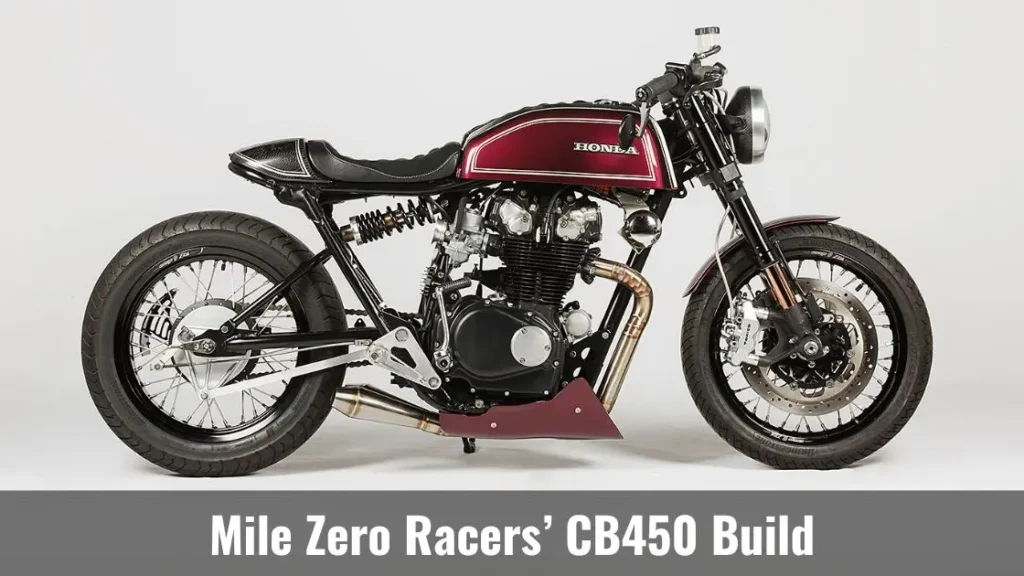
Mile Zero Racers made a stunning CB450 café racer. The bike has a sleek, minimalist look. They stripped away all extra parts to keep it light and fast. They added a custom-made seat and a classic round headlight. The handlebars are low and wide, giving the bike an aggressive stance. The builders kept the original chrome details, making it shine. The engine was upgraded for better speed and performance. This build is a perfect mix of vintage style and modern touches.
Caffeine Custom’s Black Bomber
Caffeine Custom created a unique version of the CB450 called the “Black Bomber.” The name comes from the original nickname of the Honda CB450. This bike has a dark, stealthy look. They used black paint on the frame, engine, and wheels. The builders added a custom exhaust that gives the bike a deep, loud sound. The seat is flat and matches the café racer style. This build kept the classic feel of the original CB450 but gave it a modern twist.
Kott Motorcycles’ CB450 Café Racer
Kott Motorcycles is well-known for its beautiful café racers. Their CB450 build is no exception. This bike features polished metal parts and a striking blue paint job. The frame was modified to fit a custom-made seat. The handlebars are clip-ons, giving the bike a low and fast look. The engine was rebuilt for better performance. They also added new tires and upgraded the brakes. This build looks clean and stylish, showing the skill of the builders.
Vintage Steele’s Custom CB450
Vintage Steele is another shop that made a great CB450 café racer. Their bike has a simple, raw look. They left many parts unpainted, showing the metal’s natural shine. The builders used a custom tank with a unique shape. They also added a new exhaust and carburetor for better engine performance. The bike has a comfortable seat, making it good for long rides. It keeps the classic look of the CB450 but adds a few modern details.
Garage Company’s Retro CB450 Café Racer
Garage Company built a retro-style CB450 that looks like it came straight from the 1960s. The bike has a bright red paint job and lots of chrome parts. They used a custom seat with a café racer hump at the back. The exhaust is loud and gives the bike a strong presence on the road. The builders added vintage-style tires and polished the engine. This bike shows the true spirit of café racer culture.
These builds are just a few examples of what you can do with a Honda CB450. Each one shows a different style and vision. The CB450 is a great choice for anyone who wants to create a unique café racer that reflects their personality.
Step-by-Step Guide to Building a CB450 Café Racer
A Honda CB450 can become a stylish café racer with the right plan. The project requires time, patience, and careful steps. Here’s a simple step-by-step guide to help you transform your CB450 into a custom café racer.
Step 1: Planning Your Build
Think about your goal for the bike. Do you want a classic look, a modern twist, or a mix of both? Decide on your style and set a budget. Check the condition of your CB450 and list the parts you need to replace or upgrade. This step helps you stay on track and avoid surprises later.
Step 2: Find a Good Donor Bike
The CB450 is a vintage motorcycle, so finding one in good condition can be tricky. Look for a bike that has a strong engine and a solid frame. The body might look old, but that’s okay. You can fix or replace most parts. Start with a bike that runs, if possible. This will save you a lot of trouble later.
Step 3: Strip Down the Bike
Remove all the extra parts. Take off the fenders, side panels, and the old seat. Get rid of any unnecessary parts. The goal is to make the bike lighter and cleaner. Keep the parts you want to reuse. Label them, so you know where everything goes when it’s time to rebuild.
Step 4: Modify the Frame
The frame is the base of your café racer. Many builders cut the rear part of the frame and add a seat hoop. This gives the bike a flat, sleek look. Make sure the frame is strong and safe after any changes. You might also want to add a new subframe for extra support.
Step 5: Upgrade the Engine
The CB450 engine is strong, but a few upgrades can make it better. Check the pistons, valves, and camshafts for wear. Replace old parts with new ones if needed. Tune the carburetor for better performance. A new exhaust system can improve both the sound and the power of the bike.
Step 6: Improve the Suspension and Brakes
Good suspension and brakes make your ride smooth and safe. Upgrade the front forks with stiffer springs. Replace the rear shocks with modern ones. This will make the bike handle better, especially on tight turns. Check the brake pads and rotors. Upgrade them if they are worn out or old.
Step 7: Simplify the Electrical System
Old bikes often have complicated wiring. This can cause problems. Replace the old wiring harness with a simple one. Switch to modern, smaller lights. Use an LED headlight and taillight for better visibility. Install a new battery, preferably a small, lightweight one.
Step 8: Finish the Bike with Custom Details
This is the fun part. Pick a new seat that matches the style of your café racer. Choose clip-on handlebars for a sporty look. Add a custom paint job that fits your vision. Simple, solid colors usually work best for a café racer. Finish with small details like grips, mirrors, and a speedometer.
Step 9: Test Ride and Fine-Tune
Take the bike out for a test ride. Listen for any strange noises. Feel how the bike handles. Make small adjustments to the carburetor, suspension, or brakes if needed. This step helps you catch any problems before you take it on longer rides.
This guide gives you a basic plan to build your own Honda CB450 café racer. Each step brings you closer to a bike that is truly yours. A bike that stands out and makes you proud every time you ride it.
Common Challenges and Solutions in CB450 Café Racer Projects
A Honda CB450 café racer project feels exciting but comes with challenges. Builders often face the same problems. Here are common issues and how to solve them.
Problem 1: Engine Troubles
Old CB450 engines often have issues after many years of use. Problems like oil leaks, worn-out valves, or weak pistons can happen. This can lead to poor performance and rough rides.
Solution: Start with a full engine inspection. Replace old gaskets to stop oil leaks. Check the valves and camshafts. Adjust or replace them if they are worn. Install new spark plugs and clean the carburetor for a smoother engine run. You might want to upgrade the exhaust system to boost power.
Problem 2: Sourcing Rare Parts
Finding parts for a vintage bike like the CB450 can be hard. Some parts are rare or out of stock. This can delay your project and make it more expensive.
Solution: Look online for specialty shops that sell vintage Honda parts. Join motorcycle forums and groups. Many members sell or trade parts. You can also use aftermarket parts as a substitute. They are easier to find and can give your bike a custom look.
Problem 3: Frame Modifications
Cutting the frame can weaken the structure if done wrong. Many builders want to add a seat hoop, but this can be risky without proper tools or skills.
Solution: Get help from a professional welder if you are not sure. They can cut and weld the frame safely. Use high-quality steel for any frame changes. Check the frame for cracks before you start the build. Safety should always be the main priority.
Problem 4: Electrical System Issues
Old wiring often causes problems. The CB450 has a complicated electrical system that can fail after many years. Broken wires and weak connections make it hard to get a good spark or keep the lights working.
Solution: Replace the old wiring with a new, simple harness. Use an upgraded battery and install modern lights. LED headlights and taillights work better and use less power. Test each part of the system before putting everything back together.
Problem 5: Tuning the Carburetor
The carburetor on the CB450 can be tricky. If it’s not tuned right, the engine runs poorly or stalls. This is a common problem, especially after changing the exhaust or air filters.
Solution: Adjust the air-fuel mixture for the best performance. Start with a basic setting, then test the bike on the road. Listen to the engine. If it sputters or feels weak, adjust the carburetor screws. It might take a few tries to get it right, but small changes make a big difference.
Problem 6: Structural Integrity After Modifications
Many builders cut off parts of the frame to change the look. This can weaken the bike if done without planning. A weak frame is dangerous, especially at high speeds.
Solution: Reinforce the frame with steel supports. Check every weld carefully. Make sure everything is strong and secure before you ride. Test the bike at low speeds first to check for any issues.
These problems are common, but they can be fixed with a bit of time and effort. Patience and planning help a lot. Each challenge you solve makes the final result even better. Your Honda CB450 café racer will feel more special because you built it yourself and overcome these issues.
Maintenance Tips for CB450 Café Racers
Regular care keeps your Honda CB450 café racer in good shape. It helps the bike run smoothly and look its best. Here are some simple maintenance tips to follow.
Check and Change the Oil Regularly
Old oil makes the engine run poorly. Check the oil level often. Replace the oil every 1,500 to 2,000 miles (2,400 to 3,200 km). Use high-quality motorcycle oil. Clean or replace the oil filter at the same time. This keeps the engine parts well-lubricated and helps avoid damage.
Inspect the Chain and Sprockets
A worn chain or sprocket can break and cause big problems. Check the chain for rust and tightness. It should have a little slack but not too much. Clean and lubricate the chain every 500 miles (800 km). If the chain or sprockets look worn, replace them. A smooth chain makes the ride safer and quieter.
Keep the Tires in Good Condition
Old or low tires affect handling. Check the tire pressure often. Keep it at the level recommended by the manufacturer. Look at the tread for signs of wear or damage. Replace the tires if the tread is low or cracked. Proper tires give better grip and a smoother ride.
Clean the Air Filters
Dirty air filters make the engine work harder. Clean the air filters every few months. Replace them if they look too dirty. This helps the engine get enough air and run better. It’s a small job but makes a big difference.
Check the Brakes
Good brakes are key for safety. Inspect the brake pads and rotors often. Replace worn pads right away. Make sure the brake fluid is clean and at the right level. If the brakes feel soft or spongy, bleed the lines to remove air bubbles. Strong brakes give you better control.
Test the Lights and Electrical Parts
Lights and signals keep you visible to other drivers. Check the headlight, taillight, and turn signals before each ride. Make sure they all work well. If a light is dim or flickers, replace the bulb. Test the battery too. If the battery is weak, replace it to avoid electrical problems.
Adjust the Carburetor
The carburetor needs fine-tuning to keep the engine running well. Listen to the engine. If it sounds rough or the bike feels sluggish, adjust the air-fuel mixture. Do small adjustments and test ride after each change. It takes time but helps the bike perform its best.
Tighten Loose Bolts and Nuts
Vibrations from the road can loosen bolts and nuts. Check them after each ride, especially after long trips. Tighten any loose parts. This keeps everything secure and prevents damage.
Store the Bike Properly
Keep the bike in a dry place away from rain and sun. Use a cover if you store it outside. Before storing for a long time, drain the fuel tank or add a fuel stabilizer. This prevents the gas from going bad. Charge the battery or disconnect it if you won’t ride for a while.
These simple steps help your CB450 café racer run better and last longer. Regular care shows love for your bike. It also makes each ride smoother and safer.
Legal Considerations and Compliance
Modifying a Honda CB450 into a café racer feels exciting, but you need to follow the law. Changes to the bike can affect its road legality. Here are some things to check before you ride.
Check Local Motorcycle Regulations
Different places have different rules for modified motorcycles. Some states or countries have strict laws on frame changes, noise levels, and lights. Read the local laws first. Make sure your modifications follow these rules. This keeps your bike legal and avoids fines.
Frame Modifications and Safety
Cutting or welding the frame is common in café racer builds. Some laws require an inspection after frame changes. This check ensures that the bike is safe to ride. Always use high-quality parts and get help from a pro welder if needed. This prevents safety problems and legal issues.
Exhaust and Noise Levels
Custom exhausts make the bike sound great, but they can be loud. Many places have noise limits for motorcycles. Loud pipes might get you a ticket. Check the legal noise limit in your area. Install a muffler if your bike is too loud. It keeps the sound level legal and avoids problems with the police.
Lights and Signals
Street-legal bikes need working lights and signals. This includes the headlight, taillight, brake light, and turn signals. LED lights are a good upgrade. They are bright and use less power. Test all the lights before each ride. This makes sure other drivers see you and helps you avoid accidents.
License Plate and Registration
Keep your license plate visible. Some café racer builds tuck the plate under the seat. This looks cool but can hide the plate from view. Many places have rules about plate visibility. Mount the plate where it can be seen clearly. Update your registration if you make major changes to the bike.
Insurance for Modified Bikes
Insurance can be tricky for custom motorcycles. Tell your insurance company about the changes you made. They might need pictures or receipts for the new parts. Custom bikes often need special coverage. Regular motorcycle insurance might not cover all the modifications. Talk to your insurer to get the right policy. It protects your bike if it gets damaged or stolen.
Road Testing and Safety Gear
Always test your bike on a quiet road before riding in traffic. Check the brakes, lights, and engine. Wear the right safety gear: helmet, gloves, jacket, and boots. Some places have strict helmet laws. Follow them to stay safe and avoid fines.
These legal steps may seem boring, but they are important. They protect you and your bike. Following the law makes your rides safer and less stressful.
Resources and Communities for CB450 Enthusiasts
Building a Honda CB450 café racer feels exciting, but it can also feel challenging. Finding the right parts and tips makes the process easier. Many online communities and resources help CB450 fans connect and share advice.
Online Forums and Groups
Motorcycle forums are great places to ask questions and get advice. Many experienced builders hang out in these groups. They share tips, photos, and build stories. Some popular forums include:
- Honda Twins Forum: A big community of Honda CB owners. Many topics cover CB450 builds, parts, and troubleshooting.
- Do The Ton: A forum focused on café racers. You will find many CB450 build threads with detailed photos.
- Reddit’s r/CafeRacers: This group has many café racer fans. You can share your progress and get feedback.
These groups welcome new members. Ask questions and share your ideas. People are happy to help.
Parts Suppliers and Dealers
Finding parts for a vintage CB450 can be hard. Several shops and websites focus on parts for old Honda bikes:
- Dime City Cycles: Offers many custom parts for café racers. They stock parts like seats, handlebars, and exhausts.
- Common Motor Collective: Specializes in vintage Honda parts. They have many items for CB450 models.
- eBay and Craigslist: Great places to look for used parts. You might find rare or original parts here.
Before buying, check the quality of the parts. Cheap parts can cause problems later.
YouTube Channels for Tutorials
Watching videos helps a lot with complicated tasks. Many builders post step-by-step videos on YouTube. Some useful channels are:
- Cafe Racer Garage: Features detailed CB450 build videos. Lots of tips on modifying the frame and engine.
- Revival Cycles: Shares custom motorcycle builds and helpful tips. They focus on quality work and classic styles.
- Hugh’s HandBuilt: Posts videos on vintage bike repairs. They often cover common CB450 issues.
Videos make it easier to see how each task should look. They save time and help you avoid mistakes.
Events and Motorcycle Shows
Meeting other builders in person can be inspiring. Many motorcycle shows feature custom café racers. You might see a few Honda CB450s on display. Events like the Handbuilt Motorcycle Show or The One Moto Show showcase many custom builds. Talking to other builders helps you learn new tips and tricks.
Books and Manuals
Having a manual helps a lot during a build. The Honda CB450 Repair Manual offers clear diagrams and repair tips. It covers everything from engine work to wiring. For more inspiration, check out books like The Café Racer Bible. It features many custom builds and design ideas.
These resources make your CB450 café racer build easier. They connect you with other builders and help you find the right parts and advice. Building a bike feels better when you have the right support.
Conclusion
The Honda CB450 makes a great base for a café racer. It has a strong engine, a simple frame, and a classic style. This bike gives you many options for customization. You can make it look vintage, modern, or a mix of both. The CB450 café racer stands out on the road with its unique look and deep sound.
Building this bike is not always easy. Problems like finding parts or fixing engine issues come up often. But solving these problems is part of the fun. Each step of the build adds to the story of your motorcycle. The end result is a bike that feels like yours. A bike built with your own hands.
Take your time, plan your build, and enjoy the process. Share your work with others and learn from the café racer community. You will feel proud every time you ride your CB450. It’s more than a motorcycle—it’s a piece of art and a part of history.
Happy riding and safe travels!
FAQs
How much does it cost to build a CB450 café racer?
The cost varies based on parts and labor. On average, expect to spend between $3,000 and $7,000. This includes the donor bike, parts, and any professional help needed.
How long does it take to build a CB450 café racer?
The time depends on your experience and the project’s complexity. It can take anywhere from a few months to over a year. Planning and patience are key.
Is the Honda CB450 a good choice for beginners?
Yes, the CB450 is suitable for beginners. Its simple design and availability of parts make it a good starting point. However, some mechanical knowledge is helpful.
Where can I find parts for my CB450 café racer?
You can find parts online through specialty shops like Dime City Cycles and Common Motor Collective. Local motorcycle shops and forums are also good resources.
Do I need to register my modified CB450?
Yes, you must register your modified bike. Check local laws to ensure your modifications comply with regulations. This keeps your bike legal and safe to ride.

